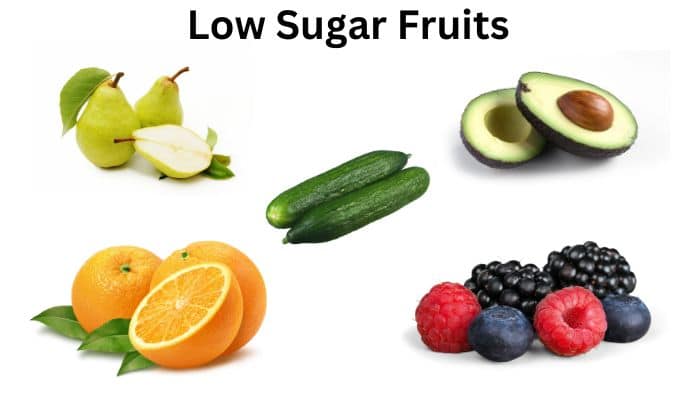Are you suffering from Type 1 or Type 2 diabetes and not sure about what fruits and vegetables you can eat. Then here is a guide to ” Low Sugar Fruits and Vegetables “.
Surveys have shown that about 1 out of 10 people in America have diabetes and approximately 90-95% of them have type 2 diabetes. Type 2 diabetes most often develops in people over age 45, but nowadays, teenagers and young children are also developing it. Therefore, it is very important to look after our eating habits and eat low sugar fruits and vegetables to prevent getting diabetes.
What happens to a person who has diabetes?
Firstly, Let us see what happens to a person who has diabetes.
Your body doesn’t make enough insulin when you have diabetes or can’t use it as well as it should. When there is not enough insulin or cells stop responding to insulin, too much blood sugar stays in your bloodstream. Over time, it causes serious health problems, such as heart disease, vision loss, and kidney disease.
So, it is a wise idea to eat sugar-free fruits and vegetables and fruits with a low glycemic index. The Glycemic index (GI) is a rating system for foods containing carbohydrates. When each food is eaten alone, it shows how quickly it affects your blood sugar (glucose) level.
The sugar in low-GI foods releases slowly into the bloodstream, preventing blood sugar spikes. The diabetic person should eat fruits and vegetables with a low glycemic index.
Below is the range for reference.
-
Low: 55 or below
-
Moderate: 56 to 69
-
High: 70 and above
Low Sugar Fruits
Let us now move to our topic. Some sugar-free fruits are AVOCADO, CUCUMBER, BERRIES, CITRUS FRUITS, PEARS, AND PAPAYA.
1. AVOCADO:-
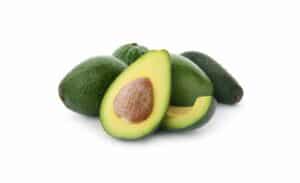
Avocado is high in fiber and low in carbohydrates. This ratio makes it perfect to lower sugar levels and hence the diabetic person can freely eat avocado without any hesitation. Avocado is considered to be one of the healthiest fruit that one should eat.
The GI score of avocado is 15.
2. CUCUMBER:-
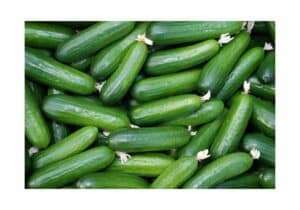
Cucumber helps with diabetes as it is high in fiber and fiber is the key to lowering blood sugar levels. It helps in digestion of food.
Cucumbers can be eaten raw or in a salad.
The GI score of the cucumber is 15.
3. BERRIES:-
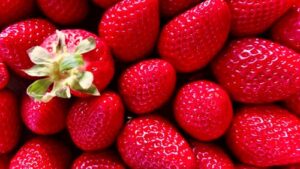
All the berries such as blueberries, blackberries, strawberries, raspberries, and cranberries are found to be effective in lowering blood sugar as they are low in glycemic index and high in antioxidants. The GI score of berries is 28-40.
4. CITRUS FRUITS:-
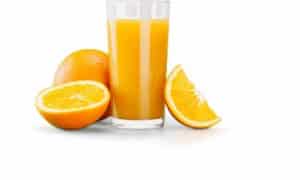
Who doesn’t like the sweet and sour taste of oranges? Citrus fruits like Lemons, grapefruit, and oranges are considered superfoods for diabetics by ‘American Diabetes Association dubs’ as they are rich in fiber and vitamin C which helps in a healthy diabetic diet.
The GI score of grapefruits and oranges is 40.
5. PEARS:-
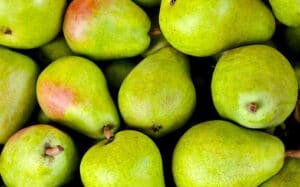
PEAR fruit is a delicious and nutritious fruit. Pears are high in fiber, potassium, and vitamin C. They are also a good source of vitamin A and vitamin B6. When consumed as a whole, pears help reduce blood sugar levels, but not when juiced. They also aid digestion.
The GI score of pears is 38.
6. PAPAYA:-
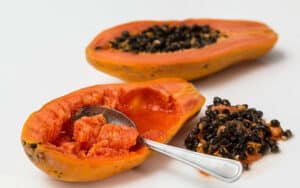
Papaya has a low glycemic index, therefore it is good for people with diabetes. Flavonoids in papaya help in reducing blood glucose levels. Usually, papaya should be consumed in moderation to prevent sugar levels from rising and stomach problems from developing. The GI score of papaya is 38.
low Sugar Vegetables
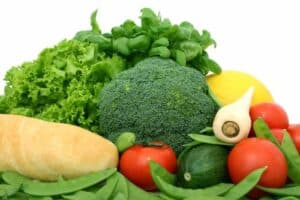
Some sugar-free vegetables are Cauliflower, Broccoli, Lettuce, Brussels sprouts, tomatoes, and spinach.
1. CAULIFLOWER:-

The cauliflower is a vegetable that many people are not familiar with. It is a low calorie vegetable that is also high in dietary fiber. It is a good source of vitamin C and vitamin B6. The cauliflower can be cooked in many different ways, including as a side dish or as a main dish.
Cauliflower has a very low glycemic index as well as it is high in fiber and vitamins which makes it a great option of vegetable for diabetics.
The GI score of cauliflower is 10.
2. BROCCOLI:-

Broccoli is a cool-weather vegetable that can grow in a variety of climates. It is cruciferous, meaning it contains a high concentration of sulfur-containing compounds, which give it a bitter flavor. Broccoli is a good source of vitamins C and K, as well as dietary fiber and calcium.
It is proven that broccoli helps in normalizing the raised blood sugar level when eaten regularly.
The GI score of broccoli is 15.
3. LETTUCE:-
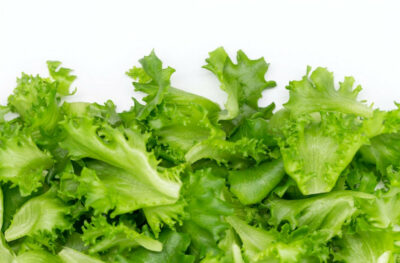
Lettuce is a cool-season vegetable that can be consumed fresh or used in salads. It is an excellent source of vitamins A, C, and K, as well as folate and potassium. Lettuce is also a good source of fiber and is low in calories. Leafy green vegetables such as lettuce help in reducing blood sugar levels.
The GI score of lettuce is 15.
4. BRUSSELS SPROUTS:-

Brussels sprouts have a long history as a dietary staple in Europe. They are believed to have originated in Asia and were introduced to Europe in the 1600s. Today, Brussels sprouts are grown in many parts of the world, but are most commonly found in Europe.
Brussels sprouts are a type of cabbage and are high in vitamin C and vitamin K. They are also high in dietary fiber and have a variety of health benefits, including reducing the risk of heart disease and cancer. Brussels sprouts are a healthy option for those looking for a light vegetable dish. They can be served as a side dish or as part of a larger meal.
Brussels sprouts contain the antioxidant alpha-lipoic acid (ALA) which can lower glucose levels. The GI score of Brussels sprouts is 15.
5. TOMATOES:-
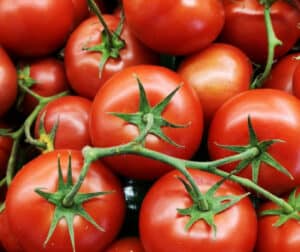
We all know that tomatoes are a staple in the kitchen, but did you know that they have many other uses too? Here are five fun facts about tomatoes you may not have known:
1. Tomatoes are high in fiber which helps us to feel full for longer.
2. Tomatoes can be used as a natural skin healer.
3. Tomatoes can help to fight against inflammation.
4. Tomatoes can help to improve digestion.
5. Tomatoes can help to improve vision.
Tomatoes will make you feel full for long hours and won’t even increase your glucose levels.
The GI score of tomatoes is 15.
6. SPINACH:-
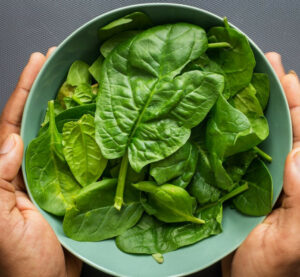
Spinach is an amazing vegetable. It is high in vitamin A, vitamin C, vitamin K, and fiber. It is also a good source of calcium, magnesium, and potassium. Spinach can be cooked in a variety of ways, including sautéing, boiling, or steaming. It can be used in soups, stews, salads, and stir-frys. It is believed that spinach reduces blood glucose levels and controls diabetes because it contains soluble fiber. The GI score of spinach is 15.
Please note that all the above-mentioned fruits are good to go for people with diabetes, but they should be taken in moderate amounts as higher intake may lead to a rise in glucose levels. Your health is important to the surrounding people so please take good care of yourself.
Which Fruits and Vegetables you should avoid eating if you have diabetes?
Fruits such as cherries, ripped bananas, mangoes, figs, lychees, pineapple, grapes, tangerines, raisins, sweetened cranberries, and vegetables such as artichokes, asparagus, celery, eggplant/aubergine, green beans and peppers should be avoided if you have diabetes.
I hope you got some information about fruits and vegetables for reducing sugar levels. Your precious comments would be much appreciated.
If you find the information in this post useful, please share it with your friends and colleagues on Facebook, Twitter, and Instagram.


